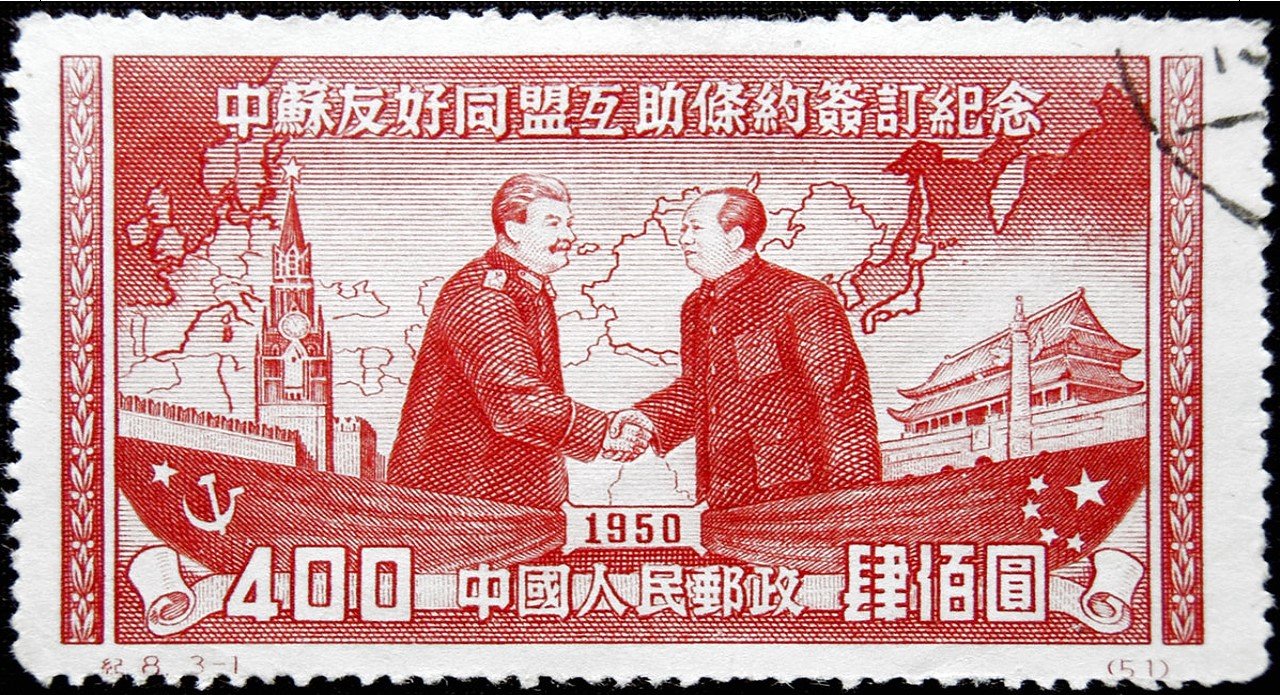

Dec
The Sino – Russian dimension of geopolitics (with its economic as well as military implications) is without a doubt a key piece in the “understanding China” puzzle and for this reason, we have dedicated an entire article to it that you can access by clicking HERE. However, referring to China’s relationships with modern-day Russia exclusively would be a bit short-sighted in light of the fact that a lot tends to get lost in terms of nuance by not taking a step back and also analyzing the Sino – Soviet dynamic.
Through this article, we will do just that.
After the People’s Republic of China was established back in 1949, one would have perhaps expected an ideological love story between China and the USSR to manifest itself. And, indeed, there were without a doubt quite a few common denominators which acted as somewhat of a foundation, whether we are referring to resentment toward imperialism or a quasi-shared vision of what the future should look like ideologically speaking.
However, as is pretty much always be the case and as explained ad nauseam here on ChinaFund.com, China tends to ultimately adopt its own version of various systems and Marxism-Leninism did not represent an exception. Perhaps most importantly, Mao’s China didn’t have what Stalin considered to be a proper proletariat or, in other words, the USSR wasn’t necessarily thrilled about China’s implementation of Marxism-Leninism. Practically speaking, however, it would have been next to impossible for the predominantly rural China to put forth a proletariat that Stalin would have approved of.
Let’s just say that while both parties were well aware of the many common denominators that existed as well as the fact that they shared common adversaries, a sometimes hard to define form of mutual resentment was more than apparent. Still, formally speaking, things were presented as downright peachy up until the mid-50s, when the (in)famous Sino-Soviet split took place (more specifically from 1956 to 1966, the start of the Cultural Revolution).
The main problem(s) revolved around the de-Stalinization of the Soviet Union, with Stalin’s successor (Nikita Khrushchev) making it clear that it was time to embrace a more moderate paradigm. He denounced some of the various mistakes that had been made during the Stalin regime (the cult of personality around the paramount USSR leader, an excessive reign of terror, inflexible foreign policy and generally-speaking excessive ideological rigidity) and believed a geopolitical balance needed to be reached, a balance which revolved around the peaceful (well, as peaceful as possible) co-existence of the communist world and the proverbial West.
As those of you who are at least moderately familiar with Mao Zedong’s philosophy (especially during the first part of the Mao regime) know, he wasn’t exactly thrilled about this newly found USSR flexibility. If you haven’t by now, we would recommend reading our article on Mao Zedong for a more detailed perspective as to what made him tick. Mao believed the USSR was displaying unforgivable signs of weakness and even accused them of revisionism, claiming that only China was properly respecting the Marxist-Leninist ideological status quo.
The Sino – Soviet split ended up being a robust geopolitical present for the United States.
Why? Simply because the geopolitical landscape was no longer bi-polar, with an almost completely unified communist dimension and the West being die-hard adversaries. In this tri-polar reality that emerged (the United States, the USSR and China), various opportunities presented themselves for the United State to exploit the not necessarily newly emerged but definitely newly cemented resentment between China and the USSR.
Ironically enough, conditions were starting to manifest themselves which led to warmer relationships between China and the US. Perhaps a textbook example to that effect is represented by Richard Nixon’s 1972 Beijing visit, a visit which paved the way for much more robust future Sino-American cooperation, especially after Deng Xiaoping took over.
As far as the Mao Zedong equation is concerned, this much is certain: some degree of mutual frustration existed right from the beginning, with Stalin considering China a let’s call it sub-optimal implementation of Marxism-Leninism. China itself was realistic about its less than stellar economic situation, with Mao Zedong making it clear that China doesn’t consider itself a First or Second World nation and, instead, was trying to “brand” itself as the leader of the Third World. While these frustrations were at the very least officially speaking kept in check at the beginning of the PRC – USSR saga, they emerged in full force after the death of Stalin and Mao’s criticism of the Khrushchev approach.
After Deng Xiaoping took over and the infamously ideologically rigid Gang of Four was arrested (click HERE for more details on the Deng Xiaoping regime), China started embarking on a far more Realpolitik-oriented diplomatic journey, with economic growth being the main goal everything else revolved around. As Deng famously pointed out, China no longer cared if the (geopolitical) cat was black or white… as long as it caught mice.
Fast-forward to the present and as we all know, the USSR collapsed under its own weight, whereas “communist” China survived. But the “communist” dimension is a bit tricky to tackle because while China is indeed run by the Communist Party of China, it ended up embracing more than a few market-oriented reforms. As such, “socialism with Chinese characteristics” (a concept we have dedicated an entire article to, one you can access by clicking HERE) is the more appropriate term, with it being highly debatable if Marxism-Leninism has survived at all as far as these two entities are concerned.
To end with a reminder, we have dedicated an article exclusively to the relationship between China and modern-day Russia, an article you can read by clicking HERE, as mentioned at the beginning of this article. Let’s just say that today’s dynamics tend to be governed by more pragmatic geopolitical or economic goals rather than ideology-related concerns. In other words, as tends to usually be the case when analyzing today’s China, Realpolitik prevails.
